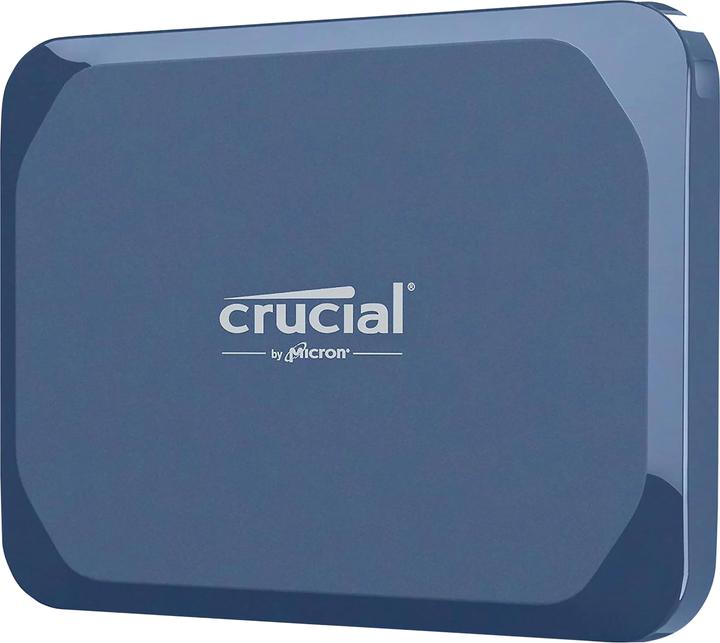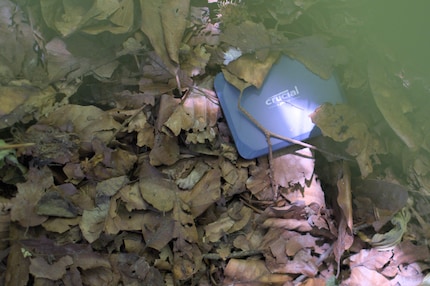

Looking for a fast external SSD? The Crucial X10 could be just what you need
With the X10, Crucial is offering a fast and reliable external SSD for everyone. In some tests, the new model even outperformed the Crucial X10 Pro, which is two years older.
I’m confused by the Crucial X10’s name. The X10 Pro was released two years ago. Turns out the X10 isn’t the official successor of that model, but of the X9 Pro. Makes sense, 9 is followed by 10, but there’s no Pro. If your head’s spinning at this point, I’m not surprised. And that’s not all: due to its specifications, the X10 basically replaces the X10 Pro, so it effectively is its successor after all.
Apart from the questionable name choice, the X10 is an excellent external SSD that impresses with its extra features as well.
The Crucial X10 in greater detail
At 6.5 × 5 × 1 centimetres, the X10 is one of the smallest external SSDs I’ve tried in recent years. It also weighs just 38.5 grammes, making it extremely portable.
The X10 is encased in a matte blue plastic housing and sports IP65 certification. As a result, it shouldn’t be affected by dust and is immune to jets of water too. It’s also designed to withstand falls from a height of up to three metres.

The X10 is available in storage sizes of one, two, four, six and eight terabytes (TB). I’m testing the two-TB version provided by the manufacturer. An unspecified in-house SSD is installed. I’m guessing the NAND memory is TLC. NAND is a non-volatile memory technology that doesn’t require power to store data. TLC stands for Triple-Level Cell, meaning three states can be stored per memory cell. For a controller, Crucial relies on the SM2322 from Silicon Motion. The manufacturer’s warranty lasts five years.
Crucial specifies data transfer rates of up to 2,100 megabytes per second (MB/s) for reading and 2,000 MB/s for writing. However, these values only apply if you’ve connected the SSD to a USB 3.2 Gen2x2 device. Otherwise the speed is reduced noticeably. The scope of delivery includes a cable with two USB-C ends.
Reading: faster than the predecessor
Crucial promises double the read speed with the X10 compared to the X9 Pro. It does fulfil this promise – at least for sequential reading. For random reading, the X10 falls behind both the X10 Pro and the X9 Pro.
The first graph below lists sequential reading, with random reading on page two. If you work with large files, the first will be relevant for you. For small files, go with the second.
As a practical test, I copy a 10-gigabyte file from the X10 to a RAM disk. The RAM disk ensures that the SSD is the bottleneck, since the disk achieves a much higher write and read rate. Here too, the X10 clearly beats the X9 Pro. The new Crucial is virtually on a par with the X10 Pro.
Writing: plenty of power
When writing, the X10 is even closer to the X10 Pro. The predecessor X9 Pro is easily left in the dust.
Here too, the first graph refers to sequential writing, the second to random writing. If you work with large files, the first will be relevant for you. For small files, go with the second.
As a practical test, I copy a 10-GB file from a RAM disk to the SSD. Same as with the read test, this ensures the SSD is the bottleneck, since the disk achieves a much higher read and write speed. Here, the X10 even outperforms the X10 Pro, albeit by a narrow margin.
To test how the SSD behaves when writing data continuously, I repeatedly write the 10 GB test file from the RAM disk to the SSD using a batch command. This allows me to determine when it starts to throttle down. The X10 hits the brakes after 300 GB of written data: 215 MB/s is all the speed that’s left. Our X10 then runs at this rate until it’s full. All in all, it takes around two hours and 30 minutes to write two TB of memory once.
Copying: not much better
When copying, i.e. reading and writing to the SSD at the same time, I duplicate the 10 GB file. Here, it’s just good enough to beat the X9 Pro, but the X10 Pro is still in first place by some margin.
Office: minor differences
In Office applications, any divergences between our three external SSDs look bigger than they really are. They’re all quick as an arrow in these use cases.
Gaming: neck and neck
Differences are also small in 3DMark’s gaming benchmark. In contrast to Office applications, you’ll notice the difference when gaming, but it isn’t significant.
How the SSD behaves at 80 per cent full
I ran all tests mentioned above with an empty SSD. As a rule, however, you’ll fill your drive over time. Even at 80 per cent full, the X10 loses very little performance. Across all benchmarks, the average loss is only six per cent.
Temperatures: on the warm side
The X10 gets quite warm during the continuous writing test: its sensor shows 74 degrees Celsius. I don’t notice much of this from the outside. The SSD feels warm, but I can still hold it fine.
In a nutshell
Fast, but many SSDs are
The X10 beats its predecessor, the X9 Pro, in nearly every respect. It can even compete with the X10 Pro a bit. Thanks to its IP65 certification and compact size, the Crucial X10 is perfect for on the go use. However, it also turns out that any differences between these SSDs are minor, in part due to the fact that the X10 utilises almost the full bandwidth of the USB 3.2 Gen2x2 standard.
But all things considered, due to its steep price as of 2 July 2025, I can’t completely recommend the Crucial X10. The Samsung T9, for example, is available right now at a lower price and delivers similar speeds. However, it doesn’t have IP certification and is bulkier.
Pro
- Speedy
- IP65 certified
Contra
- Pricey

From big data to big brother, Cyborgs to Sci-Fi. All aspects of technology and society fascinate me.


